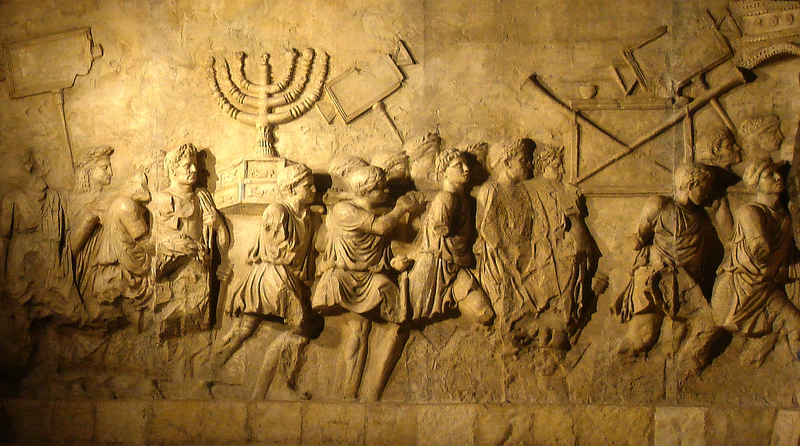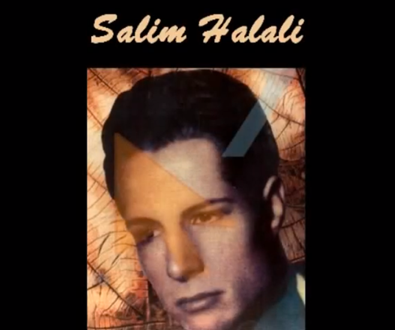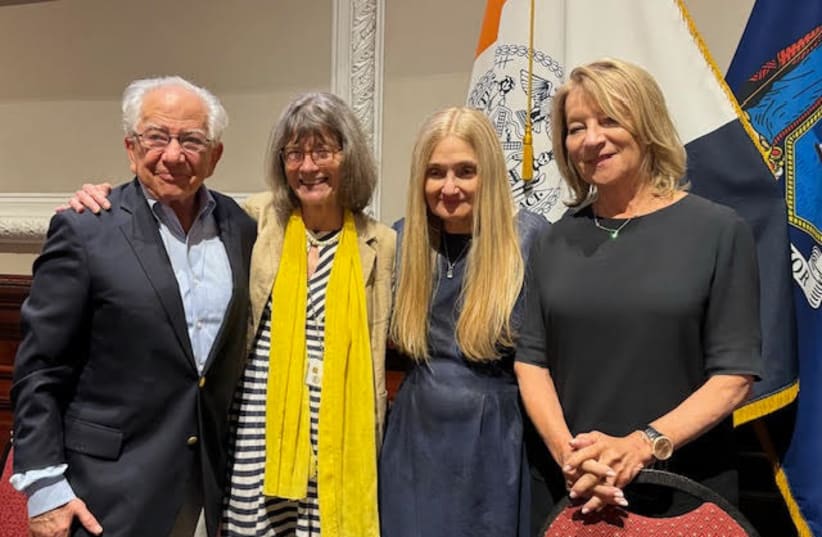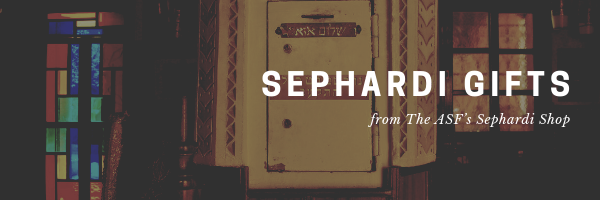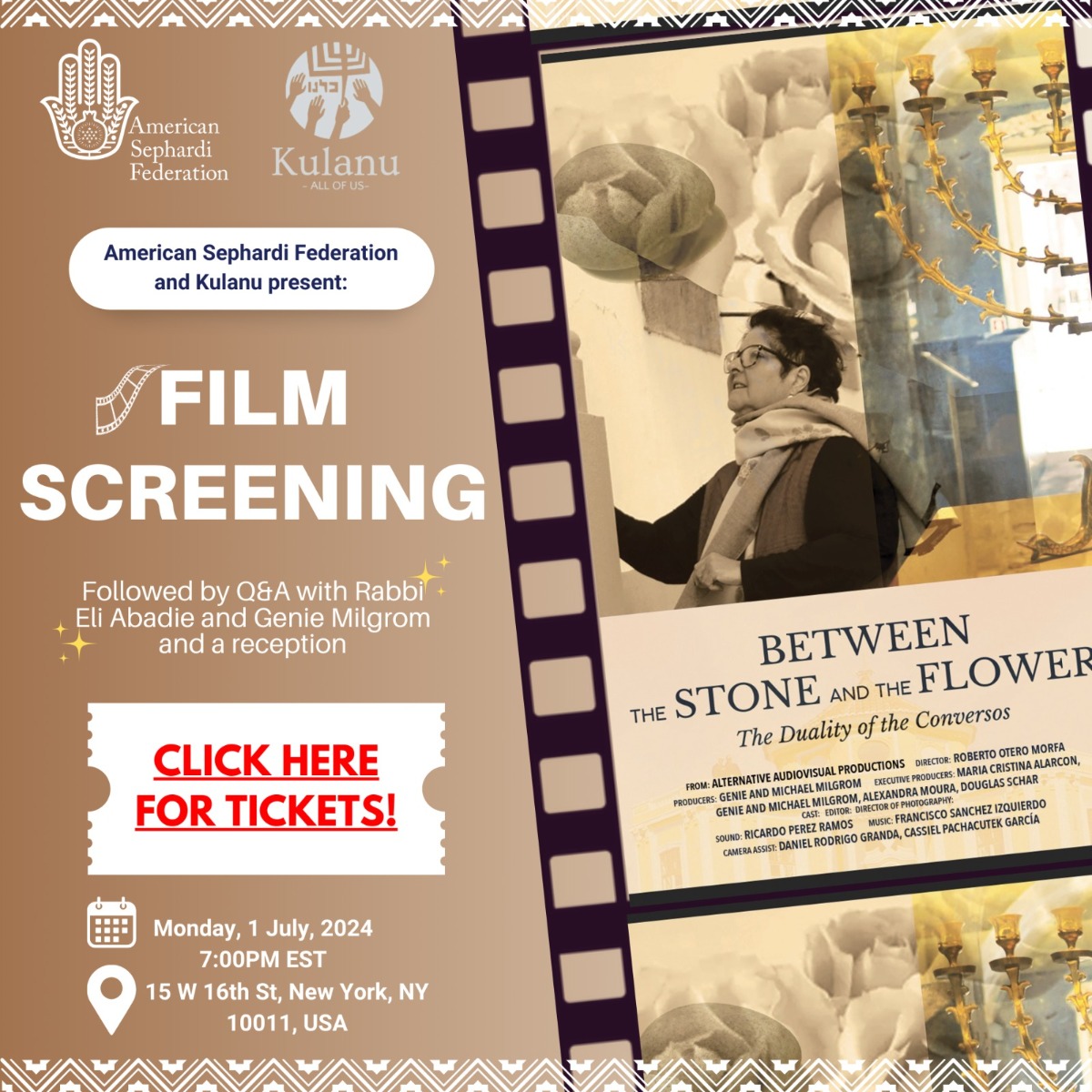In Memory of Yahya ben Yosef, A”H, purportedly the last Yemenite Jew still living north of Sana’a. A few Yemenite Jews remain, including Levi Salem Musa Marhabi, who has been a Houthi hostage since 2016.
Click here to dedicate a future issue in honor or memory of a loved one
Subscribe ◊ Upcoming Events ◊ ASF Sephardi Shop ◊ Donate ◊ Sephardi Ideas Monthly ◊ ASF IJE ◊ ASF Sephardi House ◊ Archive
The Sephardi World Weekly is made possible by Daniel Yifrach, Rachel Sally, Professor Rifka Cook, Maria Gabriela Borrego Medina, Rachel Amar, Deborah Arellano, & ASF VP Gwen Zuares!
Don't miss the latest Sephardi Ideas Monthly: “Sephardi Soul from Jerusalem to Japan and the Sassoons to Sun Yat Sen”
~~~~~~~
~~~~~~~
“The Menorah as Symbol: Thoughts for Parashat Beha’aloteha”
By Rabbi Marc D. Angel, The Institute for Jewish Ideas and Ideals
Arch of Titus Menorah Relief, Rome, Italy
(Photo courtesy of Wikimedia)
Last week’s Torah portion opens “with the dramatic account of Aaron lighting the Menorah of the Mishkan.”
Rabbi Marc D. Angel notes that while the Torah does not provide a reason for the Menorah’s presence, this lacuna has opened the space for a variety of interpretations, from the Menorah symbolizing “the seven branches of wisdom” of classical learning to “the seven days of creation, with the central lamp symbolizing the Sabbath.”
The Menorah also occupies a “deeper” place in Jewish historical memory, as
The Romans celebrated their defeat of Israel by erecting the Arch of Titus in Rome. The interior wall of the arch includes a vivid depiction of Romans carrying off treasures from Jerusalem…most notably the Menorah.
In our time, the founders of the modern State of Israel counter-stated the Arch of Titus’ depiction of “the Menorah as it was taken from a defeated and humiliated Jewish People” by reclaiming the image of the Menorah as the State’s symbol of national self-rule.
R’Angel concludes by stepping back and gratefully acknowledging how
throughout history, the Menorah has been a source of spiritual, intellectual and emotional strength for the Jewish People. In our times, with the establishment of the State of Israel, the Menorah reminds us of the power of faith, persistence, and courage. Its light should never be taken for granted.
Salim Halali Sings Ya Ghorbati
Salim Halali (1920-2005) was an Algerian-born Jewish singer who became iconic as a pop artist on the French-Arabic scene. A smooth introduction to Halali’s virtuoso and pathos-driven vocals and his songwriting talent is this masterful performance of Halali’s portrait of the migrant’s lament, Ya Ghorbati, (“O My Exile”).
“NYC bar association holds event on the Forced Emigration of Jews from the Middle East”
By Ohad Merlin, The Jerusalem Post
Judge Abraham Sofaer (ASF’s Advisory Board Member), Judge Strong, Carole Basri, Esq. (ASF’s Vice President), and Aurora Cassirer
(Photo courtesy of Abe Moshe/The Jerusalem Post)
The New York City Bar Association recently hosted a first-time event commemorating “the expulsion of Jews from Middle Eastern countries, coinciding with the 83rd commemoration of the Farhoud.”
Speakers included retired judge and ASF Advisory Board Member Abraham Sofaer, and bar member and ASF Vice President, Carole Basri, who “presented excerpts from the documentary ‘The Last Jews of Baghdad.’”
In a special interview with The Jerusalem Post, Basri, who is intimately familiar with Iraqi Jewish history, offered that “this subject is such an important one, as there are so many that don’t know about the Jewish disappearance from the Middle East.”
To appreciate the absurdity of popular perceptions, Basri notes that “Jews lived in Iraq since about 500 BCE, much before Arab and Islamic rule of the area.”
The Farhoud, however, marked the beginning of the end
Farhoud was like Kristallnacht… It didn’t happen in a vacuum or by a spontaneous mob – the government was behind it. The government passed laws which incited the mobs and made it impossible for Jews to stay…This was anti-Jewish education, which created a climate where the Farhoud was legitimized.
~~~~~~~
By Oded Halahmy
Like countless New Yorkers who arrived from distant lands, ASF’s Board Member Oded Halahmy has a rich personal history of exile, migration and travels. Born in the old city of Baghdad in 1938, the artist came from a family of Orthodox Jews with deep roots in ancient Babylonian culture. Iraqi Cooking: Exile Is Home is a tasty exploration of Oded’s roots accompanied by several pieces of original poetry, art, sculptures and jewelry.
Exploring Sephardic Customs and Traditions
By Rabbi Dr. Marc D. Angel
Over the centuries, Jewish communities throughout the world adopted customs that enhanced and deepened their religious observances. These customs, or minhagim, became powerful elements in the religious consciousness of the Jewish people. It is important to recognize that minhagim are manifestations of a religious worldview, a philosophy of life. They are not merely quaint or picturesque practices, but expressions of a community’s way of enhancing the religious experience. A valuable resource for Sephardim and Ashkenazim alike.
~~~~~~~
Upcoming Events or Opportunities
American Sephardi Federation and Kulanu presents:
An ASF New York Premiere:
Between the Stone and the Flower
Film screening followed by Q&A with Rabbi Eli Abadie and Genie Milgrom, and a light reception
Between the Stone and the Flower follows the journey of Genie Milgrom, a direct descendant of the Pre-Inquisition Jews of Spain in her quest to uncover her hidden Jewish lineage.
Raised Roman Catholic in Havana, Cuba she made a return to Judaism that shook her family and friends to the core. Her search led her to Medieval archives in several countries and to untangling the web of secrecy that her ancestrs created as protection during very dark times in Europe.
This documentary was screened to sold out theatres around the world since its world premiere in Miami Jewish Film Festival earlier this year.
Monday, 1 July at 7:00PM EST
Sign-up Now!
Tickets: $10
Director Bio:
Roberto Otero, Director of Alternative Audiovisual is a veteran in film production. He directs his successful cooking show in Miami, “Con Sabor a Miami.” He has filmed numerous productions in the Bahamas and Peru, including documentaries for Cable and the Ministry of Education. He is a graduate of the Instituto Cubano de Arte e Industria Cinematográfica (ICAIC), Cuba as well as the Escuela Nacional de Cine Radio y Televisión.
~~~~~~~
American Sephardi Federation presents:
The Trial of Adolf Eichmann
Adapted on stage by David Serero
Inspired by actual events, this powerful drama takes audiences on a haunting journey through one of the most infamous trials in history, examining the depths of human evil and the quest for justice.
Don’t miss this compelling and thought-provoking theatrical experience as the world premiere of “The Trial of Adolf Eichmann” opens in July 2024 at the Center for Jewish History, inviting audiences to reflect on the lessons of history and the enduring struggle for justice and reconciliation.
21 July at 7:00PM EST
22 July at 8:00PM EST (Premiere)
23 July at 3:00PM EST
25 July at 8:00PM EST
@the Center for Jewish History
Sign-up Now!
Tickets: $26-$36
For questions and more details please call 855.688.7277 (ext.1)
The play revolves around the trial of Adolf Eichmann, one of the principal architects of the Holocaust, who orchestrated the systematic murder of millions of Jews during World War II. Set in Jerusalem in 1961, the story follows the trial of Eichmann, a former Nazi officer captured by Israeli agents in Argentina and brought to Israel to face justice. As the courtroom drama unfolds, audiences are confronted with the moral dilemmas faced by the prosecution, defense, and the international community. Eichmann’s unapologetic defense, which hinges on his claim of “just following orders,” sparks intense debates about responsibility, collaboration, and the nature of evil. The play delves into the legal and ethical complexities of the trial, exploring how the pursuit of justice can intersect with the need for closure, healing, and reconciliation in the aftermath of unspeakable atrocities. David Serero’s masterful writing combines historical accuracy and dramatic tension to create a riveting theatrical experience. “The Trial of Adolf Eichmann” challenges its audience to grapple with profound questions about humanity’s capacity for cruelty and the enduring quest for accountability in the face of unimaginable horror. With a talented ensemble cast, David Serero’s direction, and meticulous attention to detail, this Off-Broadway production promises to be a thought-provoking and emotionally charged exploration of a pivotal historical moment. “The Trial of Adolf Eichmann” is a timely reminder of the importance of remembering the past and seeking justice, even when the wounds are deep and the scars are still fresh.
~~~~~~~
The American Sephardi Federation presents:
“The Golden Age of the Jews of Alandalus” | “La Edad de Oro de los judíos de Alandalús”
On View in the Paul S. And Sylvia Steinberg Great Hall
through June 2024
@ the Center for Jewish History
The Jewish community of Alandalús gave the world extraordinary thinkers like Maimonides, diplomats like Ibn Shaprut, and poets like Ibn Gabirol and Judah Halevi, whose wisdom, works, and accomplishments resonate through the ages. 820 years after his death, the RAMBAM’s contributions to medicine, philosophy, diplomacy, and Jewish law continue to inspire wonder and influence till today. Across the Mediterranean in Fustat (Cairo) about two hundred thousand documents accumulated in the Ben Ezra Synagogue’s Genizah—a room or grave where obsolete sacred documents are respectfully discarded—over the course of nearly a millennium.
The geographical location of Egypt, a natural bridge between the Islamic East and Christian West, made it possible for many of these documents to be of Andalusian origin. This exhibition, curated by the University of Granada Professor José Martínez Delgado, takes us on a journey from the origins of this important community to its exodus and extinction in the XIX century. Although subsequently scattered all over the world, Sepharadim have maintained connections to their past by perpetuating traditions, the Ladino (Judeo-Spanish) language, and exemplifying a seriously Jewish yet cosmopolitan worldview.
~~~~~~~
The American Sephardi Federation presents:
Convergence: Arabic, Hebrew, and Persian Calligraphy in Conversation
Featuring the multilingual art of Ruben Shimonov Convergence creates a visual world where Hebrew, Arabic, and Persian languages interact with, and speak to, one another; a world where stylized letters and words dance together on the page; a world where cultures, religions, communities, and philosophies intersect.
Juxtaposing cognates from these ancient West Asian languages, artist Ruben Shimonov encourages the viewer to explore the deep-rooted connections between these tongues, as well as the multilayered and transnational identity of the artist himself.
On View in the Leon Levy Gallery
through June 2024
@ the Center for Jewish History
~~~~~~~
The American Sephardi Federation and Mimouna Association’s Rebuilding Our Homes Project present:
Re-Creation: Judaica by Moroccan Muslim Artisans
Explore the exhibition of Judeo-Moroccan art, Moroccan Judaica, cultural and religious objects, including Menorot, Mezuzot, Yads, Shabbat Candleholders, Seder Plates, Hallah Covers, and much more.
On View through June 2024
@ the Center for Jewish History
As Moroccan Jewish populations largely left the mellahs (Jewish quarters) in the latter half of the 20th century, there was a danger that not only designs but even the traditional artisanal techniques needed to create them would be lost. Passed down from one artisan to another and perfected over time, these designs and techniques. ranging from vibrant patterns to intricate metalwork and soulful wood carvings, are expressions of Moroccanity and reflect the individual character of each city. The materials and craftsmanship of Rabat are different than Fez, and Essaouira is distinct from both.
Mimouna Association and the American Sephardi Federation’s Rebuilding Our Homes Project, a multi-year USAID-supported New Partnerships Initiative, brought three notable experts-Ms. Zhor Rehihil, Ms. Deborah Koenigsberger Gutierrez, and Ms. Meryem Ghandi to train Moroccan Muslim artisans in the history of Judeo-Moroccan art and guided them in re-creating Moroccan Judaica, which encompasses a diverse array of cultural and religious objects, including Menorot, Mezuzot, Yads, Shabbat Candleholders, Seder Plates, Hallah Covers, and much more.

